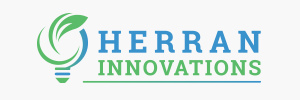The Croatian Government announced that it will tax the extra profits of energy companies, mentioning only oil company INA, but the question of taxing the extra profits of renewable energy producers, who for years, while prices were low, had concluded contracts with the energy market operator HROTE as a guarantee for their investments, has also started to be raised in the public. Now, when the market price is higher than the one contracted with HROTE, RES producers terminate these contracts and enter into power purchase agreements (PPAs).
Namely, the problem is that the contracts concluded with HROTE does not have a penalty, that is, they do not bind investors for a fixed period, while at the same time they correct the purchase price of electricity by adjusting it to inflation, in order to protect investments from loss of value. According to HROTE, in other countries there is a possibility for power plants to leave the feed-in system for a year, in order to earn extra income, but in Croatia, those who have left the subsidy system cannot return to it.
In the contracts concluded under the feed-in tariff system from 2007, 2012 and 2013, clauses for early termination of the contract were not included, because such an option did not even exist. The levelized cost of production from RES (LCOE) at the time of the contract conclusion was far above the market prices, nor could it be foreseen that the market situation will develop like the current one.
HROTE said that as many as 63 contracts out of a total of 1,299 were terminated by 20 October, without providing info on power plants which have left the system. Unofficially, it can be heard that a certain number of wind farms have left the feed-in system, some of which were close to the end of their current contracts with HROTE, and half of all biogas plants, and all of them have signed an electricity purchase contracts with private companies.
It is actually about a third of the total portfolio within the support system, which totals 1,280.7 MW. More precisely, as of 20 October, there are currently 690 MW in the subsidy system (509 MW in 13 wind power plants, 91.3 MW in 40 biomass power plants, 24.8 MW in 21 biogas power plants). At the moment, 590 MW of RES capacity is outside the subsidy system, of which 12 wind power plants with a combined installed capacity of 472 MW and 27 MW in 23 biogas plants. It should be kept in mind that part of the production never even entered the incentive system, so currently 133 MW of solar installed capacity is outside the subsidy system, and 49 MW is within the system.
However, Croatia’s RES subsidy system is still stable. Part of RES production, which is consolidated into the Eco balance group, is sold on the CROPEX energy exchange, and part of the production is bound by sales contracts. Since prices on the exchange were extremely high in the past year, HROTE also made significant profit from renewables, especially until the plants started to leave the system. And there is also a decent fee that it collects for each kWh paid by small, low- intensity consumers, at the level of 0.014 euros/ KWh. According to HROTE’s report from the end of September last year, it sold a base 60 MWh at an average weighted price of 121.32 euros/MWh.












